The
Eupatorium genus has a plant for everyone. From purple to magenta to white blooms, from gold leaves to green leaves, from short to gargantuan forms, you just can't go wrong. In winter the taller species provide fantastic architecture that birds perch on, and since these plants have hollow stems, you can leave them up without snow and ice getting into the crowns. Sow seeds in autumn or winter and let nature do the work of stratifying for you. All year long
Eupatorium varieties can be the heartbeat of a thriving garden.
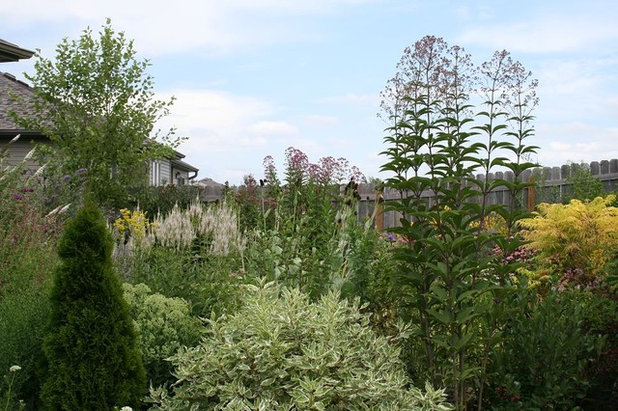
Benjamin Vogt / Monarch Gardens
Botanical name: Eupatorium spp
Common names: Joe Pye Weed, mistflower, boneset, snakeroot
Origin: Varies by species, but most are native to the Central to Eastern Plains, Midwest, Southeast and New England
USDA zones: 3 to 9, depending on species (find your zone)
Water requirement: Varies by species, from moist to dry; most are fairly adaptable once established
Light requirement: Full sun to partial shade
Mature size: Slowly spreading clump to several feet, but depends on species
Benefits and tolerances: A musky scent butterflies can't resist; great perches for birds; unique tropical form
Seasonal interest: Masses of blooms from summer through fall (depends on species, so get one of each for lasting color); a haunting presence in fall and winter; leaf color can be a good yellow in favorable autumn conditions
When to plant: Spring to fall
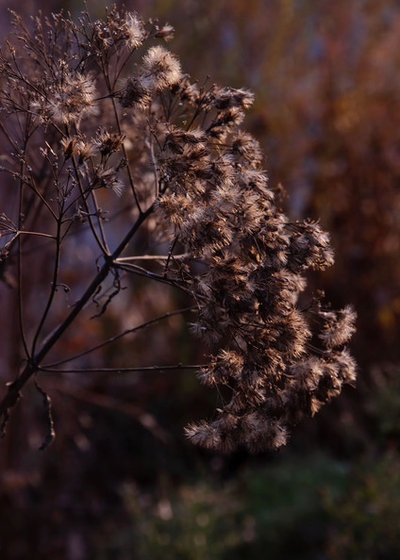
Barbara Pintozzi
The previous image shows
Eupatorium fistulosum (grows 5 to 8 feet tall) in the front right and
Eupatorium purpureum (grows 4 to 6 feet tall) in the middle back.
Both are hardy in zones 4 to 8 and like medium to moist soils, ranging from sand to clay. Full sun is best for these late-summer bloomers, but I've heard of folks who have
E. purpureum in full, dry shade and it still does well.
As you can see, their rust-colored seed heads have a lovely sheen in late autumn. These plants will slowly spread each year to form thick clumps, reminiscent of bamboo, perhaps doubling in diameter every two years.
In late fall
, Eupatorium 'Phantom (shown here) also displays dark, attractive seed heads.
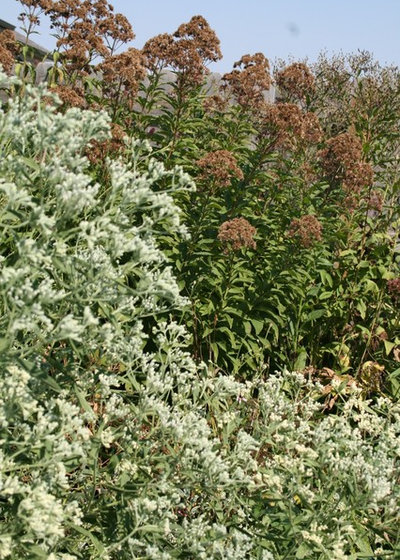
Benjamin Vogt / Monarch Gardens
In the background here is
E. purpureum, and in the foreground is the cultivar
E. altissimum 'Prairie Jewel'. This white-blooming cultivar grows in full to partial sun, in dry to medium soil. Literally clouds of insects gorge on it in early autumn, creating a second layer of flowers that lift en masse as you walk by.
'Prairie Jewel' grows to about 4 feet tall and wide in three years. Like all
Eupatorium, it can be cut back 50 percent in mid to late spring to keep it more compact and increase blooms.
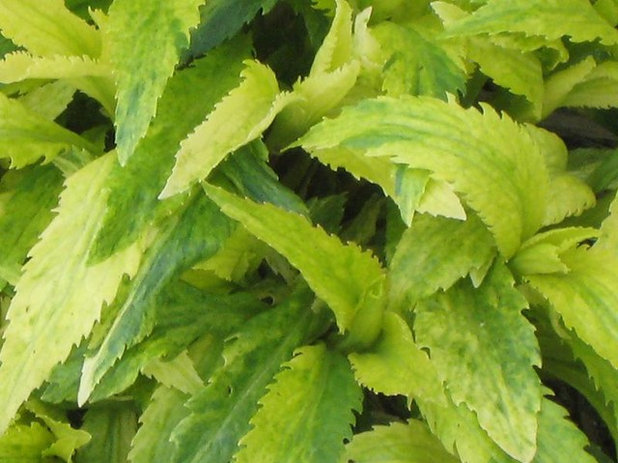
Benjamin Vogt / Monarch Gardens
'Prairie Jewel' has fantastically bright leaves in early spring. The yellow turns a creamy white in summer.
Not pictured but also with white blooms is
E. perfoliatum, or boneset. It's very cold hardy (zones 3 to 8) and likes a richer, moister soil in full to partial sun. It reaches 3 to 4 feet tall and wide — it's a solid clumper like all the previously mentioned
Eupatorium. It's found all over the Central, Northern and Southern Plains, and prairie settlers once believed the leaves could help set fractured bones.
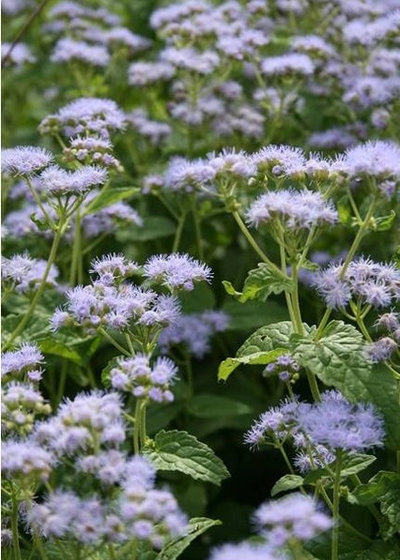
Benjamin Vogt / Monarch Gardens
Eupatorium coelestinum comes in white- and purple-blooming varieties. Shown here is
'Gateway' (zones 5 to 10), which reaches about 2 feet tall. Although it spreads more aggressively than other
Eupatorium, it is very easily ripped out of the soil and divided.
Again, insects adore it, and this species gets reliable yellow fall color. Plant it in full to partial sun in pretty much any soil. I have some divisions in dry shade, where it's less aggressive and nothing else can grow.
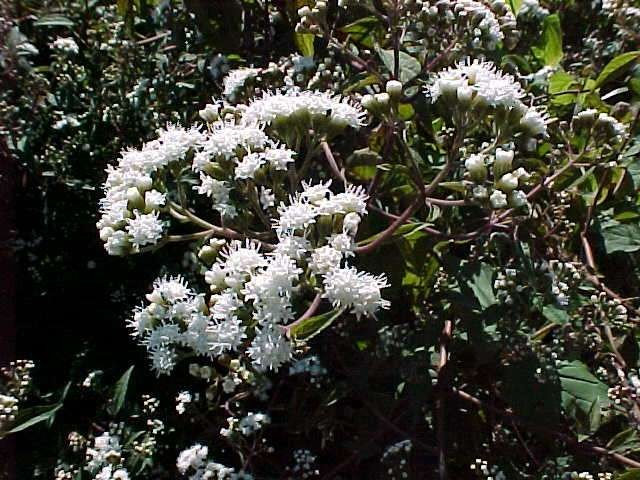
Missouri Botanical Garden
E. rugosum 'Chocolate' is a dark-leaved, white-blooming, well-behaved clumper. The more sun it's in, the wetter the soil it needs; full sun and moist soil are best. On average it grows about 2 to 3 feet tall and wide.
How to use them. Eupatorium plants are adaptable, which means you can find one that will work for any situation. I like the tall species for accents at corners or centers of beds, and the shorter species as filler to shade the ground so weeds can't grow.
Planting notes. Any
Eupatorium species can go in the ground from early spring to late fall. Soil and light conditions vary by species, as noted above, but this is a tolerant group.
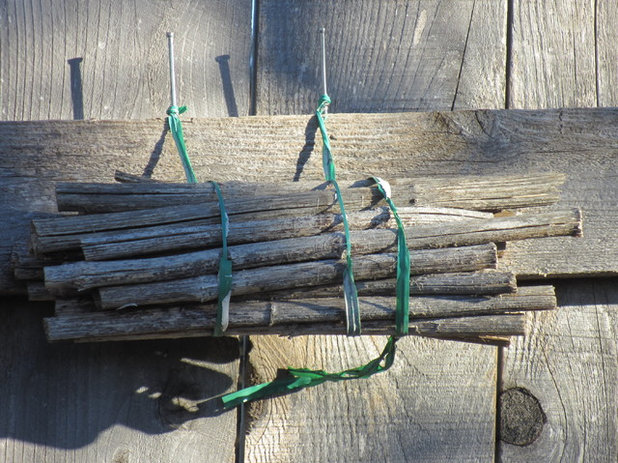
Benjamin Vogt / Monarch Gardens
When you take down your plants in early March, cut the hollow stalks into 6-inch lengths. Make bundles of these and place them on fences or walls to make native bee houses.
The majority of crop and flower pollination is done by native bees, like blue masons — solitary bees who incubate their young in hollow stems and holes in wood. Some of the young even overwinter in these places. Help out the dwindling bee populations and use
Eupatorium stems for yet another season: the bee-breeding one.





